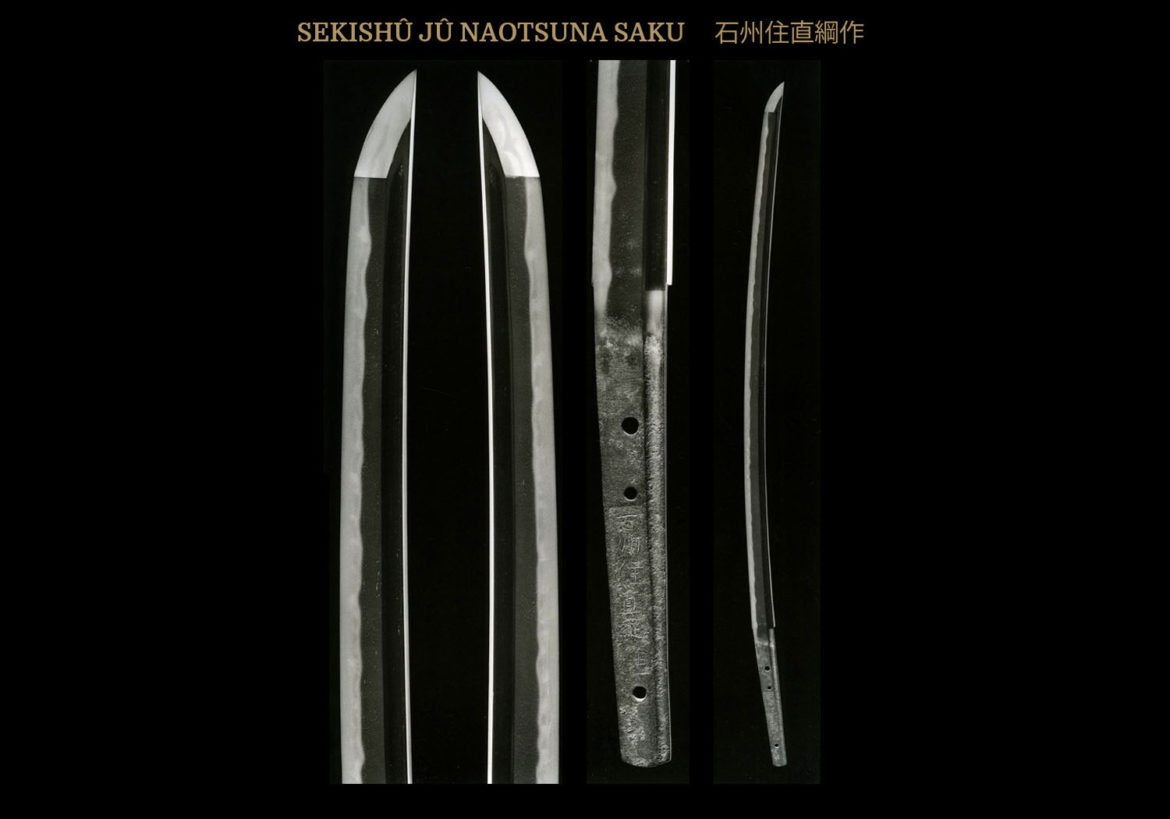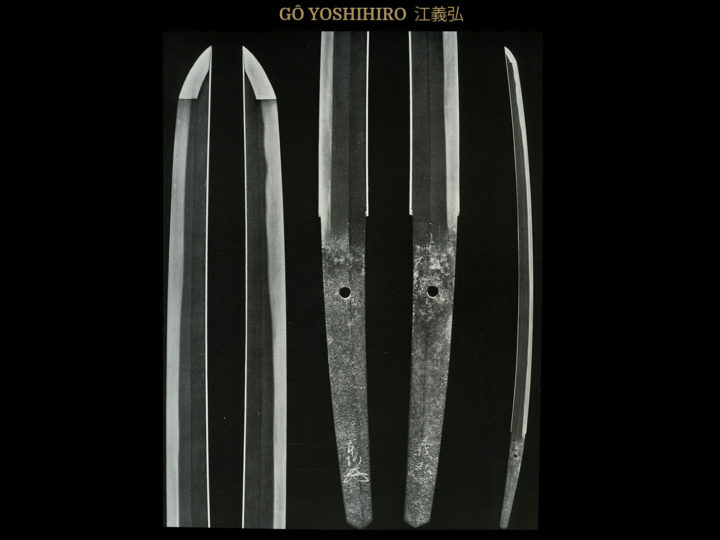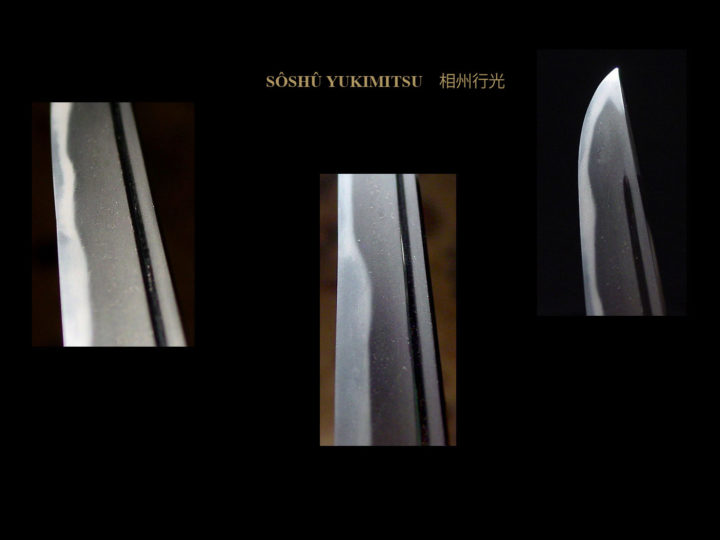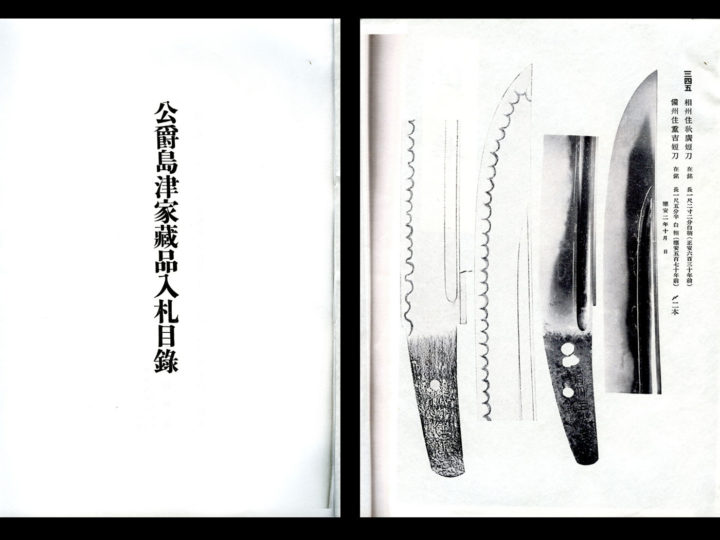
The swordsmith Sekishû Naotsuna (石州 直 綱) was from Iwami Province (present day Shimane Prefecture) on Honshu. He is considered to have been the son and student of Sekishû Moritsuna (石州盛綱). He worked around the Teiwa Era (貞和) or 1345. Since this was the height of the Nanbokuchô Era and Naotsuna (直綱) made mostly long tachi which have been shortened, very few blades remain with his signature. The only Nanbokuchô dated sword known is a tantô that was dated in the second year of Teiwa (貞和) or 1376. This blade is considered to have been the work of the second generation.
The first generation Naotsuna (直綱) is regarded to have been one of the ten best pupils of Masamune (正宗)(Masamune Jutetsu正宗十哲). There is a Tokubetsu Juyo signed tachi that is considered the work of the Shodai. It exhibits obvious ties with the works of Masamune (正宗). This slim tachi contains outstanding chikei as well as kinsuji and sunagashi, which all clearly demonstrate characteristics of the Sôshû influence. It is illustrated below.
Although Iwami Province was well known for producing fine iron ore, it is not known for producing a long line of fine swordsmiths. The Naotsuna (直綱) line was certainly an exception, but it only lasted for three generations. One of the students of Naotsuna (直綱) was Sadatsuna (貞綱) who, likewise, led a three-generation lineage of smiths who produced fine swords. Beyond these two lines, there were other smiths who continued into the Muromachi Era and beyond, but few of them were of note.
SUGATA: The tachi were long with shallow torii sori. Since most of the tachi have been shortened, this sori has been somewhat lessened. Blades with generally have a chu-kissaki that is sometimes a bit compressed. The will be little hira-niku. The shinogi is high creating a narrow shinogi-haba and the mune is low.
JITETSU: The grain of the steel is itame mixed with mokume. The color of the steel will tend to be a little dark. The ji will be well sprinkled with ji-nie and chikei.
HAMON: There will be variations in the width of the hamon and it will be heavily worked in nie. There are examples of gunome mixed with togareba, ko-notare, chôji-gokoro, etc. It is deep nioi lined with nie throughout. There are many sunagashi and kinsuji. It goes into the ji where it forms tobiyaki and yubashiri.
BÔSHI: The bôshi will vary also. Generally, it will be a midare-komi with a deep kaeri. At other times, it will cover almost the entire bôshi. In almost all cases, there will be nie forming hakikake which are multi-layered nie formations appearing like the trace of broom strokes.
HORIMONO: bo-hi (single wide grooves) and futatsu-hi (double grooves) are found.
NAKAGO: If ubu, the nakago will have sori with a tip in kurijiri. The yasurimei will be sujikai or katte-sagari.
MEI: The signed extant works of the shodai are signed with the ni-ji mei Naotsuna. The second generation has left signed examples reading Naotsuna Saku and Ishikawa Izuha (no) Ju Naotsuna Saku. There is also one extant tanto by the second generation with the Nengo Eiwa Ni-nen Ju-gatsu Nichi (October 1376).





